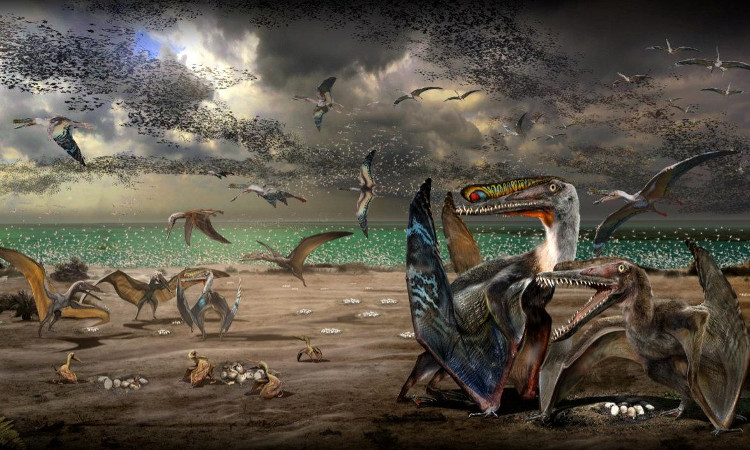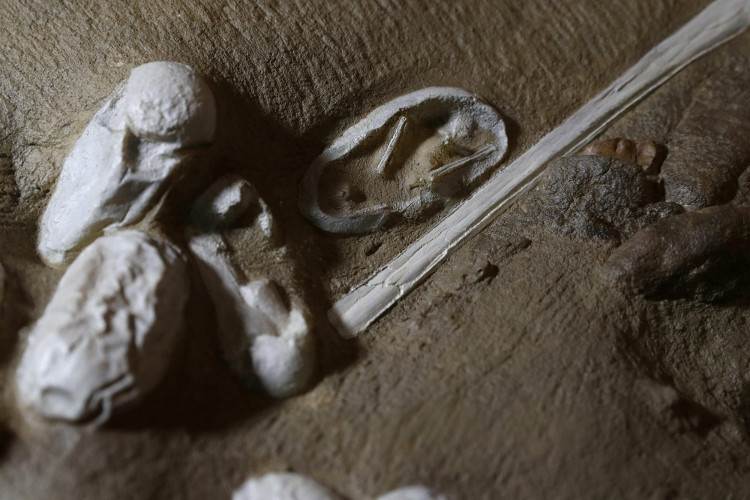Hundreds of 120 million year-old lizard eggs found in China
Researchers found 215 in China, of which 16 still contained embryos.
Scientists found 215 fossil eggs from the Hamipterus tianshanensis in the Xinjiang autonomous region, China, and Guardian yesterday reported. This finding helps them conclude that their offspring are not immediately flyable and need care from their parents.

Flying lizards are the first flying vertebrates on Earth.(Photo: Reuters).
Hamipterus tianshanensis lizard lives 120 million years ago, inside. Their main food is fish. The adult has a crest on his head, a long skull, sharp teeth and wingspan of 3.5 meters.
Of the eggs discovered, 16 still contain one part of the embryo. In addition to eggs and some young animals, scientists also found fossils of adults.
"We want to call this place" The Eden of the flying lizard ", the ancient creature of Shunxing Jiang at the Institute of Ancient Vertebrates and Anthropology of the Chinese Academy of Sciences, commented.
Flying lizards are the first flying vertebrates on Earth, and new birds and bats appear. Previously, scientists had never discovered any lizard eggs still containing embryos stored so well.
Fossil pregnancies indicate the calf's hind legs grow faster than other essential parts of the wing-like wing, according to Alexander Kellner's paleontologist at the Brazilian National Museum in Rio de Janeiro.
"In some birds, the young can fly as soon as they come out of the egg, while others will need a longer time to live under the care of their parents. Young Hamipterus tianshanensis can walk but cannot fly right away." , Jiang said.

Scientists discovered many egg fossils in China.(Photo: Marcelo Sayao).
Scientists think these flying lizards live in flocks near a large freshwater lake. Kellner provided evidence that the children gathered together to lay eggs and would return to this location in the following years.
The team determined that some eggs, young offspring and adults could be swept away by nesting areas by the storm, falling into the lake, sinking into mud and becoming fossils. Each egg is about 7.2cm long, has a thin outer shell with a few cracks and a thick film inside, similar to the soft egg type of some modern snakes and lizards. Scientists rarely detect lizard eggs and embryos during archaeological processes because soft-shell eggs are difficult to turn into fossils.
- Flying lizard eggs 120 million years in China
- China: Discovered 130 million year old dinosaur eggs still intact
- Found fossil lizard 120 million years old
- Mexico: Lizard discovered 23 million years old
- Fossils of dinosaur eggs 70 million years in China
- 9-year-old boy found fossil dinosaur eggs 66 million years
- China: Going for a walk, stumbling across a 66 million year old dinosaur egg
- 200 million year long sea fossil remains intact
- Detecting sea lizard fossils 75 million years
- China: Digging soil to build, discovered a series of dinosaur eggs of 145 million years
- Found fossil flying lizard eggs
- Eggs store eggs under the arm
 Discovered an ancient centipede fossil 99 million years old
Discovered an ancient centipede fossil 99 million years old Discovered bat-like dinosaurs in China
Discovered bat-like dinosaurs in China Discovered a 200-year-old bronze cannon of the coast
Discovered a 200-year-old bronze cannon of the coast Discover 305 million-year-old spider fossils
Discover 305 million-year-old spider fossils